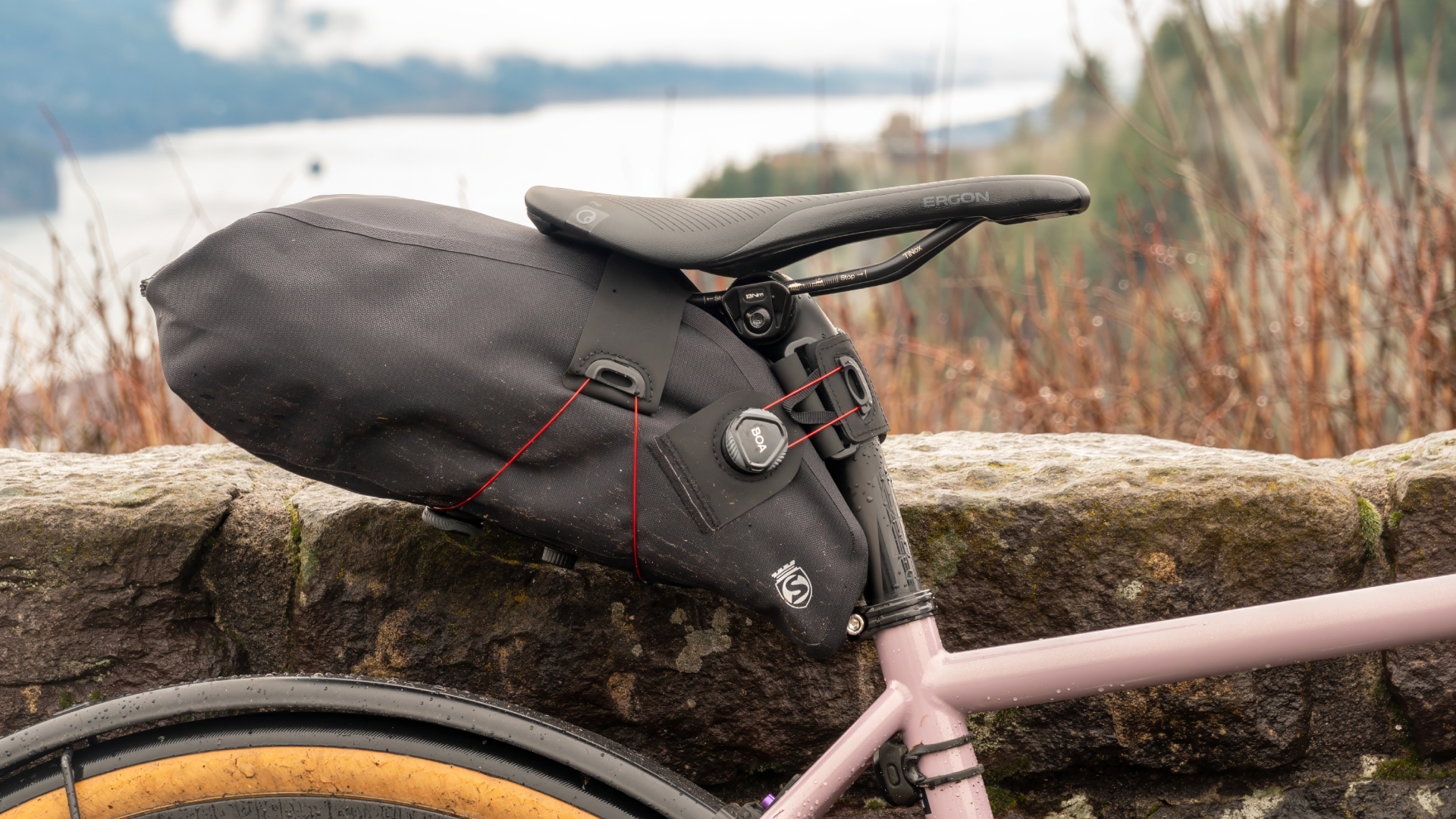
Silca, a brand with a heritage dating back to 1917 Italy but now headquartered in Indiana, USA, is an intriguing company.
Its product line runs the gamut, as Silca seems to take various everyday cycling products and aims to improve them. From its iconic pumps to titanium bottle cages, tools, chain wax systems, tubeless sealant, and even aero socks, there's no telling what product Silca will release next.
"Silca products grow out of how we ride, what we want to ride, and where we can make improvements or solve existing problems across the cycling landscape," says Richard Pool, Silca's Marketing Director. "Our mission is to improve the cycling experience, on and off the bike, with products that stand the test of time."
Today, Silca introduced its Grinta Bags, an on-the-bike storage solution consisting of a handlebar bag and a roll-top seat pack for a quick overnighter or a long day in the saddle.
Equipped with a BOA mounting system and weatherproof welded seams, Silca aims to solve common problems like the saddle bag tail-wag, slipping straps and damp contents.
We received a set of the bags for some pre-launch testing, which took place on a quick hotel overnighter in some pretty awful conditions. I conquered 150 miles of sleet, hail, rain and a high of 34°F (1°C) all in the name of testing. Here's how the bags fared.
Introducing: Silca Grinta Bags
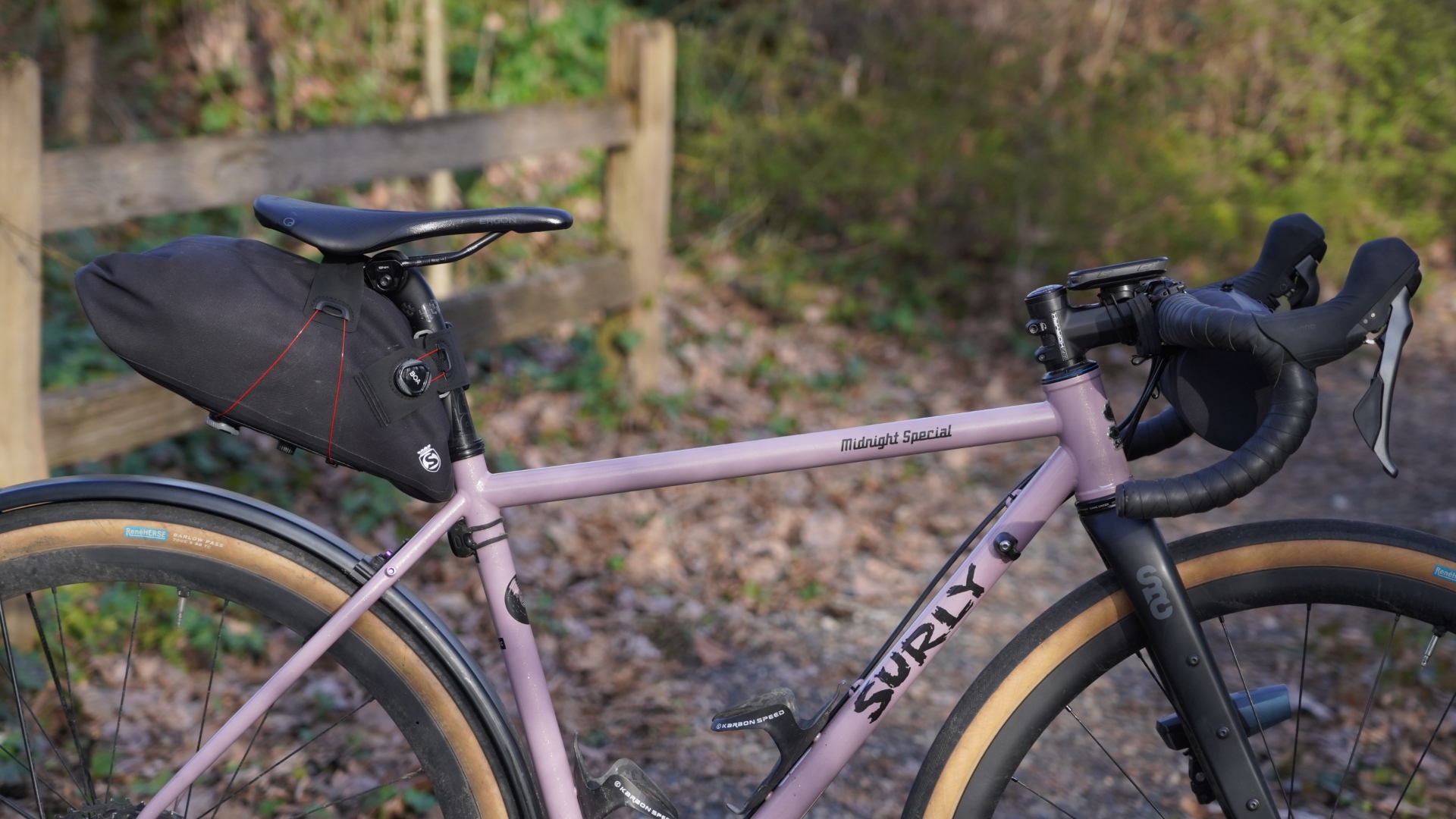
Staying clear from the ‘bikepacking’ bag category, Silca calls the Grinta Bags “fast-packing” bags instead. Think credit-card camping, flash-packing, or ultra-endurance gravel races—the Grinta Bags are purposely limited in capacity, intended for “carrying just what you need while not overpacking and weighing you down.”
“It has been a little over ten years since we moved the brand to Indianapolis, and a lot can change in ten years. The core of the crew is a bit older, wiser, and most now have kids, while the multi-day long tours and XL bike packing trips are behind us (just for now),” says Pool.
“We still need to get out, explore, and do the things that make us who we are as cyclists and outdoors people. We have entered our S24O (sub twenty-four hour overnight) and ultra-endurance fast-packing phase. Long weekend gravel events or quick burst into the woods, with a hammock, a beer (or maybe two), and a quilt. A night of solitude, recharging in nature, under the stars. When the sun rises it is a race home to arrive just in time to make breakfast for the family.”
The Grinta collection consists of a two-liter handlebar bag and a roll-top seat bag with a two- to five-liter capacity. While sleek in design, the bags sport some thoughtful features. Both are constructed of weatherproof fabric and feature welded seams.
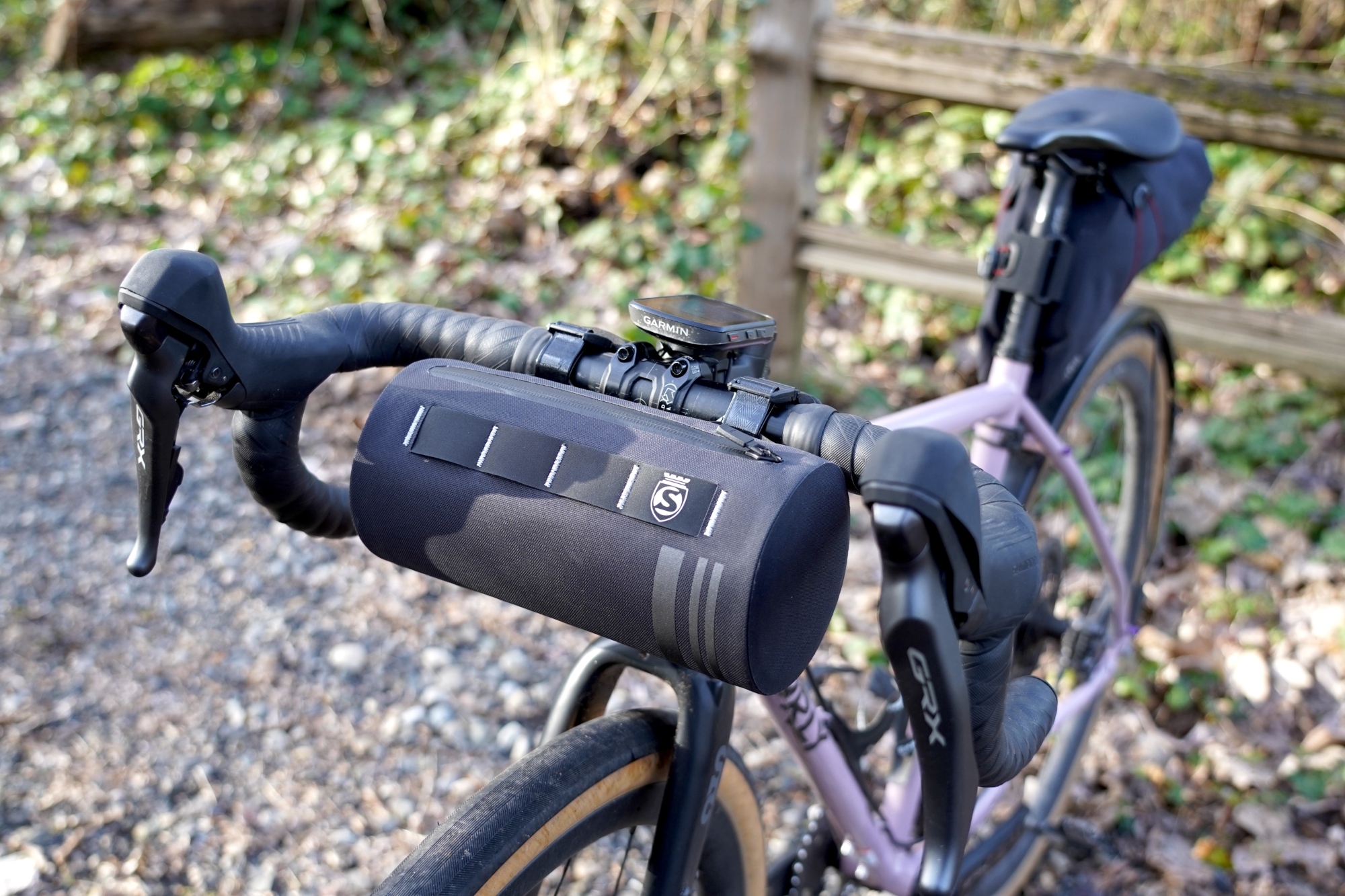
The round bar bag features a removable insert that gives the bag its rigidity, a full-length YKK zipper, and two anti-slip coated straps with magnetic slide closures. An optional third strap is included for a third securing option around the stem or the headtube. On the outside, the bar bag sports attachment points and reflective elements.
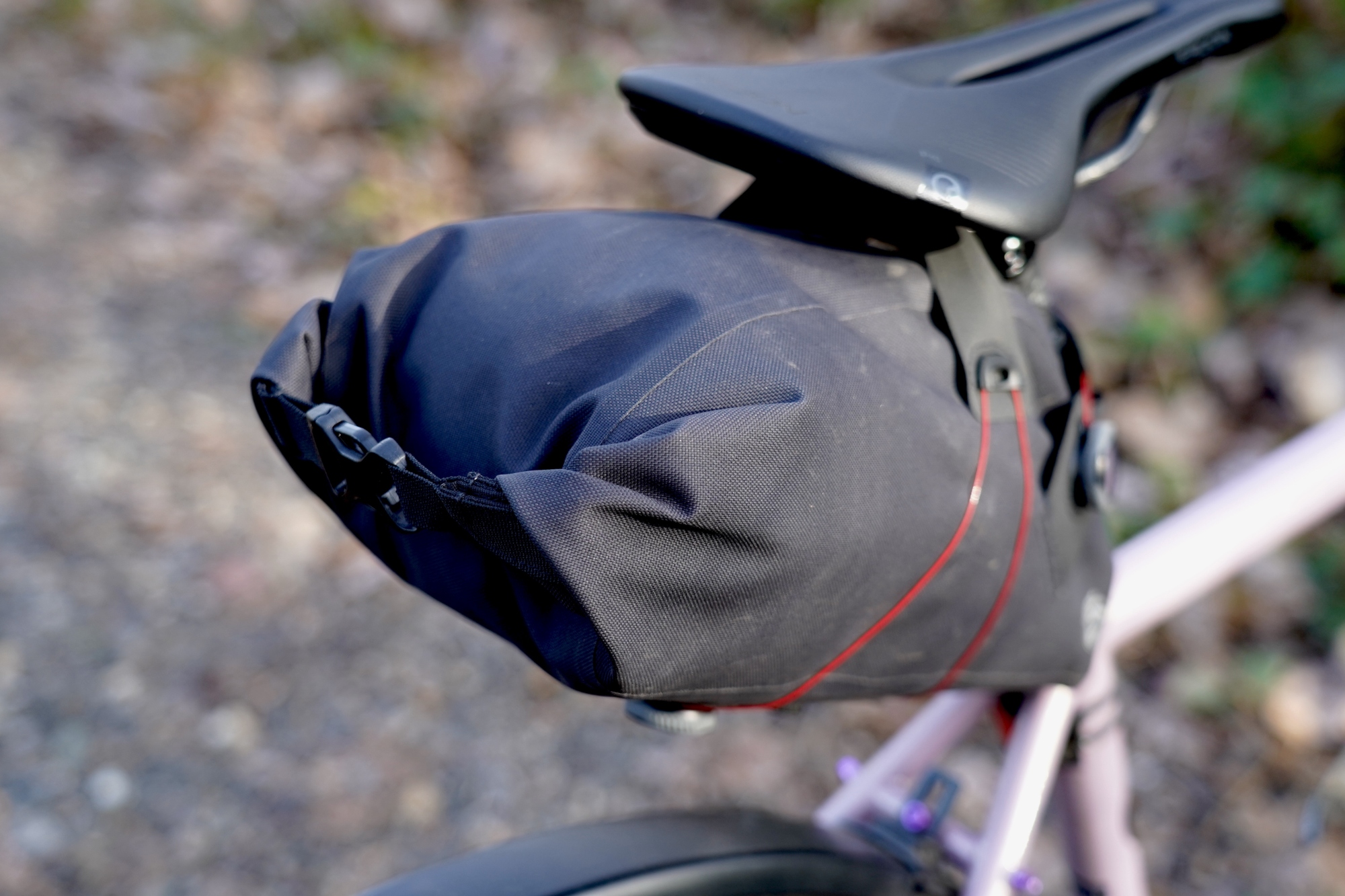
The seat pack features a roll-top closure for easy packing, an adjustable BOA mounting system attached to the saddle rails and seatpost, and an air release valve for easy packing.
The Product pecs
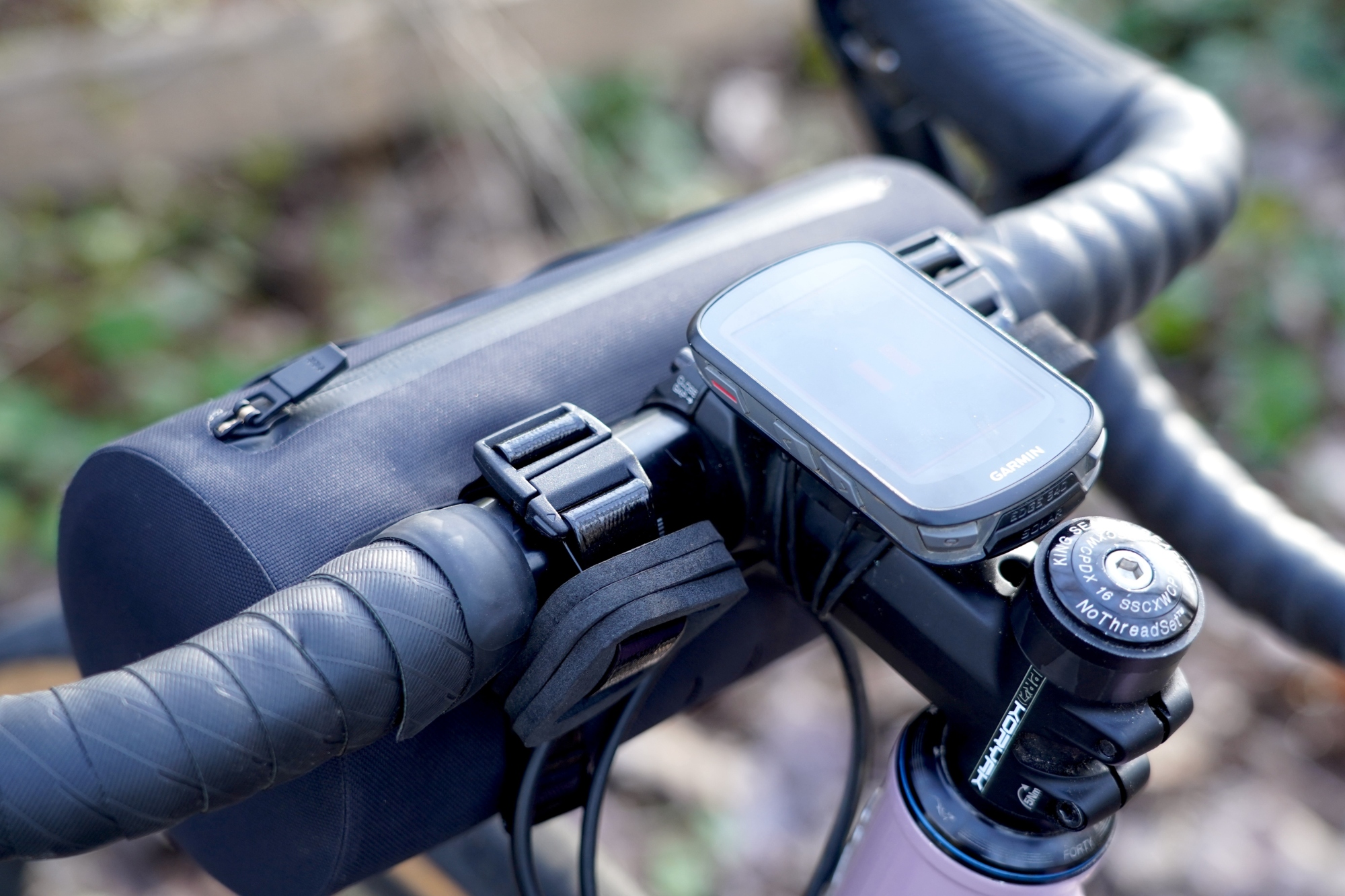
Grinta Handlebar Bag:
- Materials: BLACK 100% CYCLEPET 600D w/ Kiss Coating
- YKK Aquaguard zipper and welded seams for weatherpoofing
- Three-point attachment: two handlebar straps, a third strap for stem or headtube
- Weight: 160g
- Dimensions: 23cm x 11cm x 11cm
- Capacity: 2L
- Rigid internal structure to hold shape
- Price: $95 USD / €115
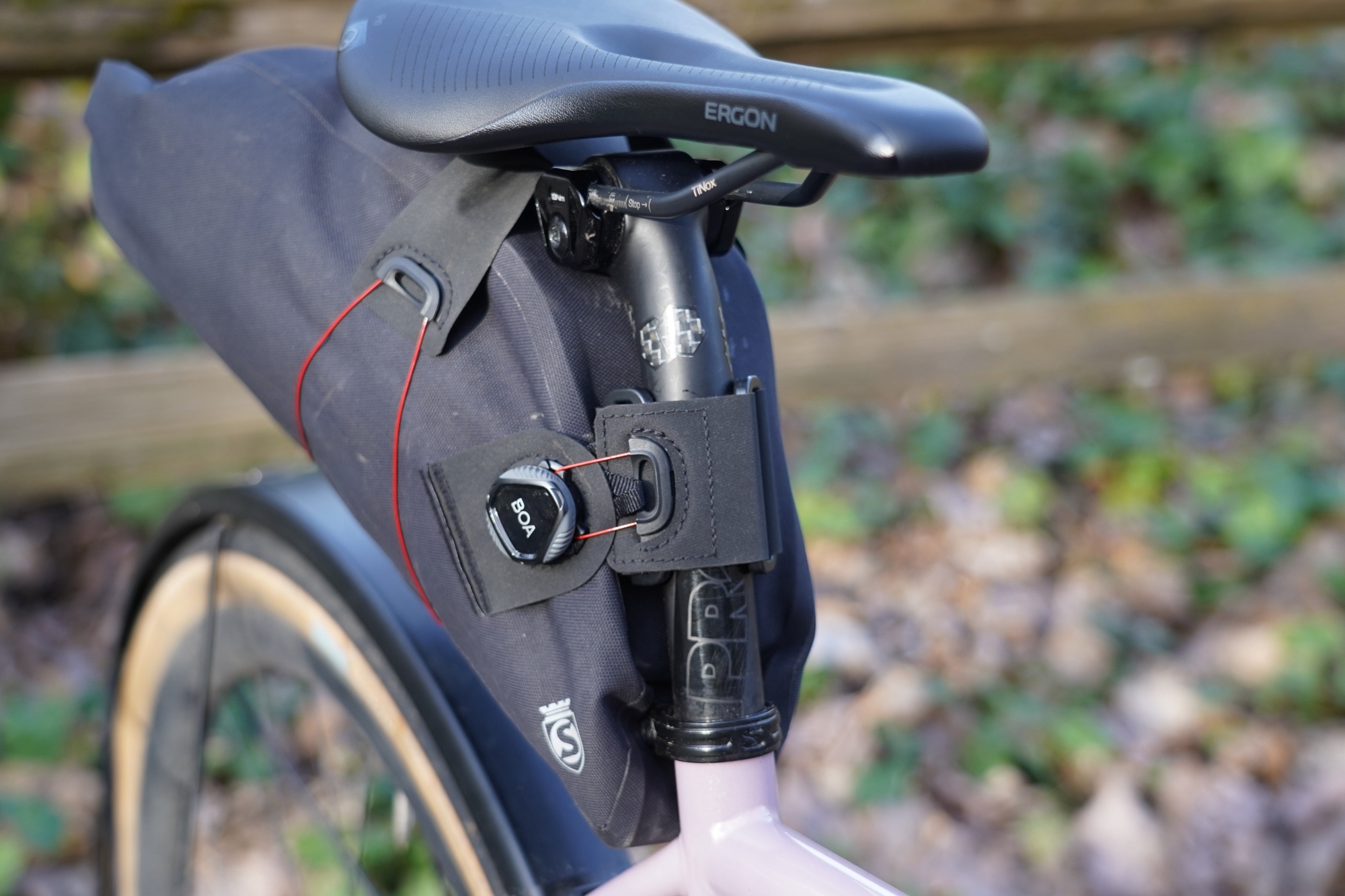
Grinta Roll-Top Bag:
- Roll-top closure for easy packing
- Two-point attachment: seat rails and seatpost
- Weight: 208g
- Dimensions: 30cm x 15cm x 15cm (rolled to top of PE)
- Materials: BLACK 100% CYCLEPET 600D w/ Kiss Coating
- Also Hypalon strap & BOA® closure system
- Price: $160 USD / €195
Silca Grinta bags in use:
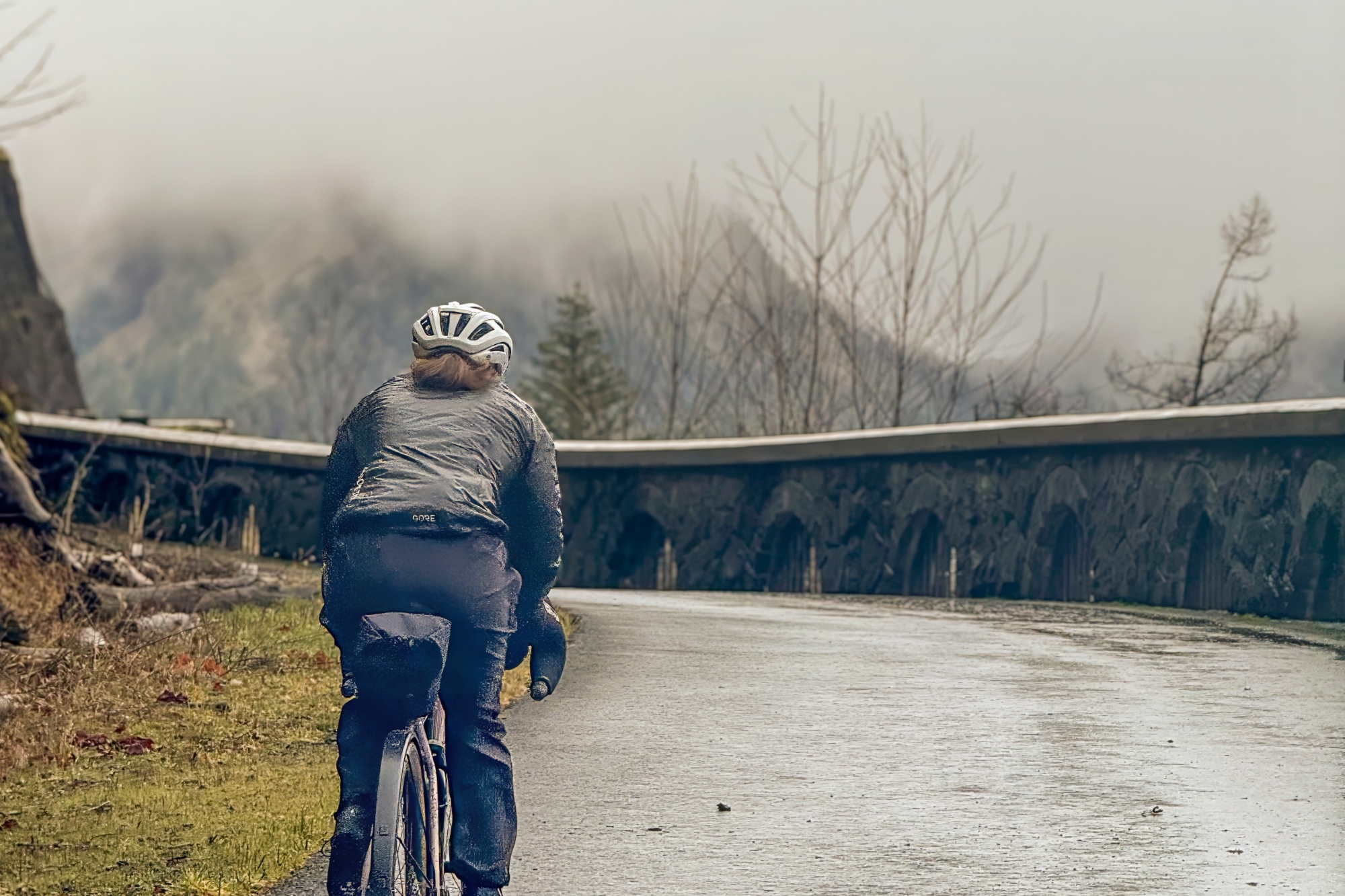
Heading out on my quick overnight adventure, I'll confess I had a touch of apprehension. The weather forecast was dismal, with a high likelihood of enduring a bone-chilling downpour for the entire 150-mile journey, possibly even encountering snow,, it felt like a risky move to rely on these unfamiliar products. Many items on the market claim to be 'weatherproof,' but often buckle under the relentless rain of the Pacific NorthWET. The thought of arriving at the hotel soaked to the bone was daunting enough; the last thing I needed was for my backup gear to be just as waterlogged.
What's more, Silca has employed a BOA mounting system to its smaller seatpacks, the Mattone and the Asymmetrico, with varying success. One of our reviewers disliked the Asymmetrico seat roll so much that he gave it a rare one-star review and questioned the use of BOA reels for anything but shoes.
However, Silca continues to believe in the system, promising a secure, wiggle-free hold yet adjustable fit.
Fortunately, I needn't have worried. Yes, the weather was every bit as bad as feared, but the bags delivered on their promises: they stayed on, and my dry clothes and toiletries were unharmed by the journey.
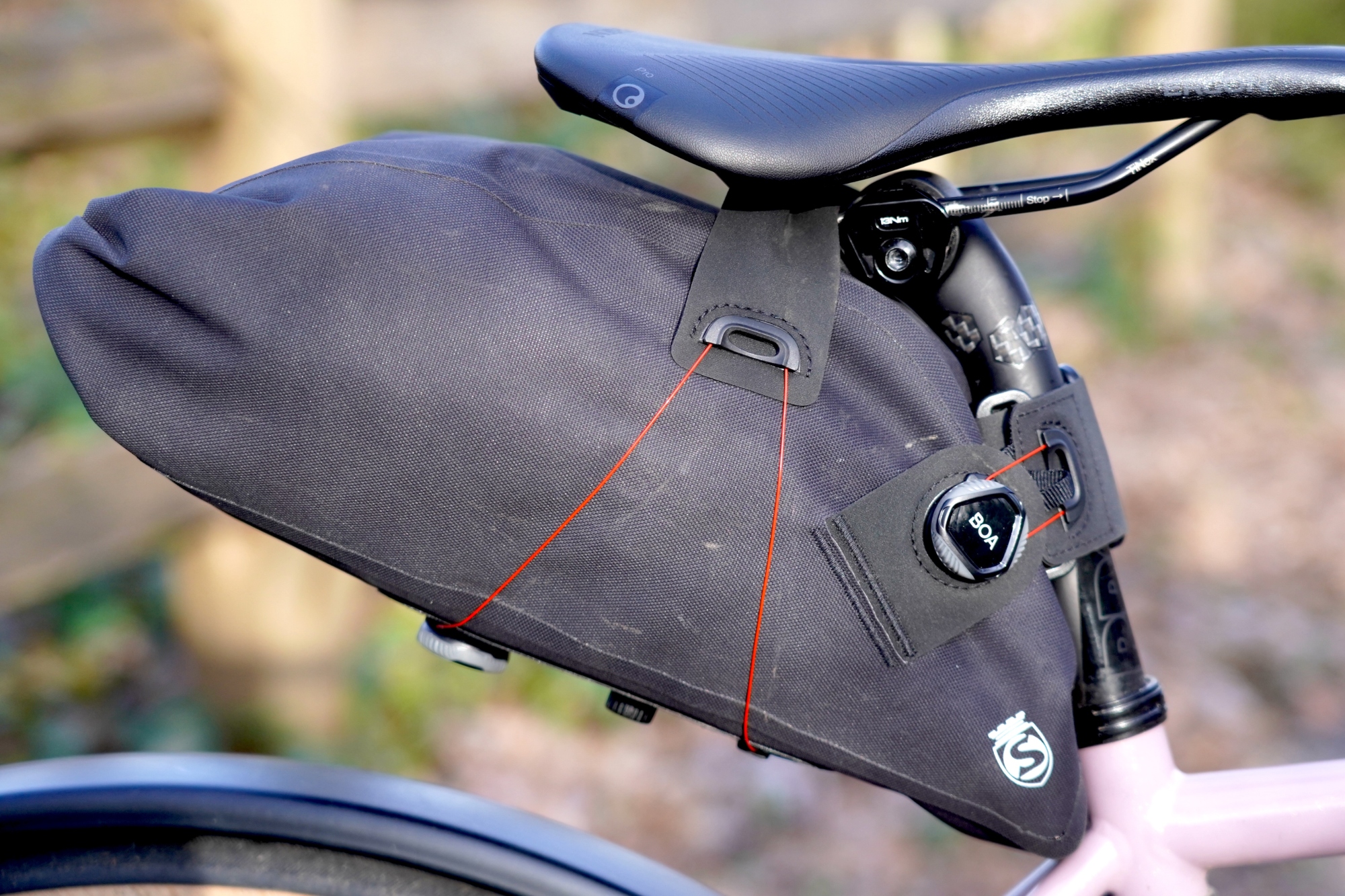
The Grinta Roll Top Bag in use:
BOA mounting system aside, the seat bag sports a familiar design akin to many roll-top seat packs available on the market – perhaps just a little smaller. It's constructed of a sleek four-panel dry bag with some reinforcement to help maintain the shape up and away from the rear tire. A roll-top closure ensures both ease of access and weatherproofing. Adjusting the 2 to 5 liter capacity of the bag is a matter of the number of rolls you give the closure before closing the buckles. Given that I took the bag on a very wintery outing, I needed to bring more warm layers and voluminous kit than one typically would carry on a spring or summer overnighter. As such, the max 5L capacity was rather restrictive, leading to me adding extra storage options to my setup.
Attaching the bag to my bike using the BOA mounting system was intuitive enough, though a two-handed operation.. The bag sports three wide straps with plastic hooks. One goes around the seatpost and one around each of the saddle rails. You then simply loop the BOA cables around the corresponding hooks, push down on the BOA dial and rotate clockwise until the bag sits snugly against the saddle and seatpost. Pop the BOA reel up to loosen the system. Despite the relatively fragile appearance of the BOA cables, the system offers an impressively secure hold. Across the pavement and gravel, I never noticed any swaying or feedback from the bag, which is very common in bikepacking seat bags.
My only worry about the BOA system is that after off-road adventures, grit tends to enter the BOA reels, causing them to hitch or get stuck. I've had my fair share of struggles with BOA closures on gravel shoes, so it's definitely something to keep an eye on.
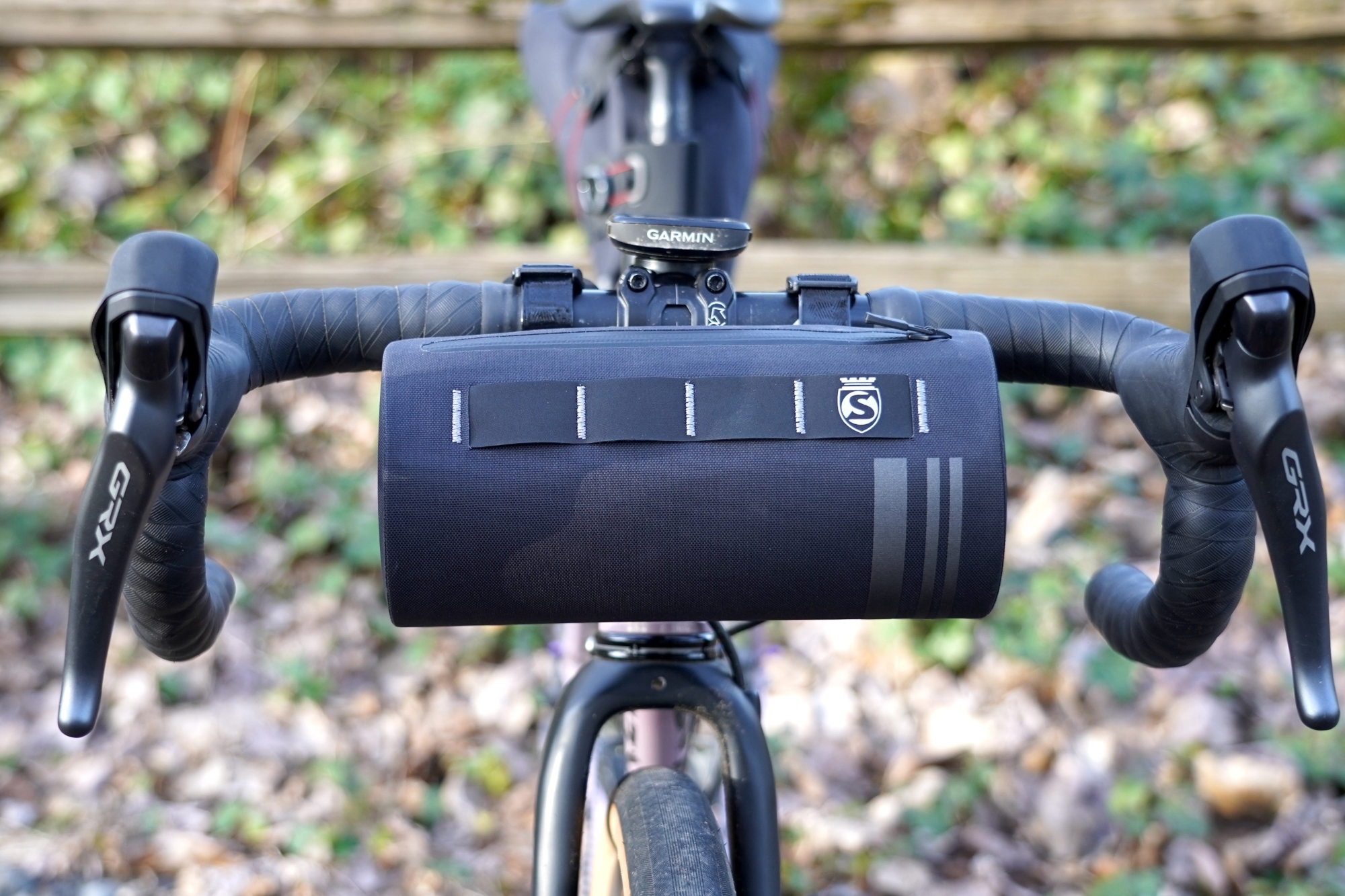
The Grinta Handlebar Bag in use:
Size-wise, the Grinta Handlebar Bag slides between Topeaks’ spacious Tubular Barbag and Lead Out!’s mini handlebar bag. A versatile bag option, I could see this bag being used as someone’s daily driver as well as a helpful companion on an ultra-endurance event like the Unbound XL. However, as Silca made clear from the start, it is not big enough for bikepacking.
With its two-liter capacity, I managed to cram in a pump and fix-a-flat necessities, snacks, an Ottolock, a thin jacket and gloves. The essentials and nothing more – exactly as advertised.
As with the seatpack, the handlebar bag looks sleek and minimalist. It features a single large compartment accessed via a full-length YKK zipper on top. The removable rigid insert is a nice touch, as it gives the bag its shape, allowing you to use its full carrying capacity and making on-the-bike access easy.
Another nice touch is the TPU-coated handlebar straps, which prevent slippage and roughing up your bike’s paint. It took a few minutes to size the straps to my handlebars, but once adjusted, the magnetic buckles made for easy attachment and removal. The weatherproof fabric and welded seams are crucial here in the rainy Northwest –no one likes rusted tools and a soggy bar!– and thus far, have not disappointed.
Conclusion & Value
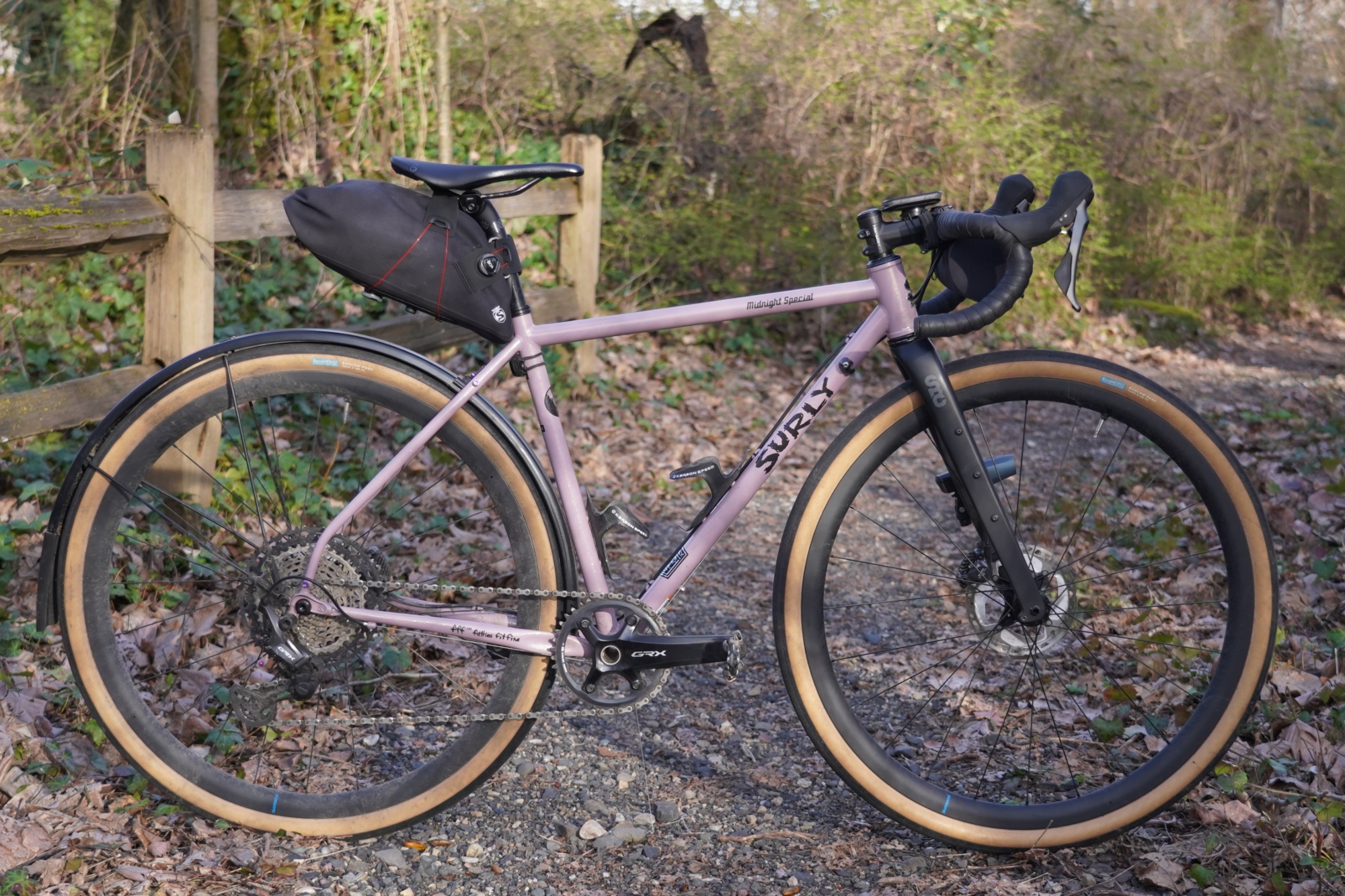
The category for mid-size handlebar bags isn't all that big. You're more likely to find a bag that's significantly larger (for bikepacking) or smaller (for everyday use). I'd place the Grinta handlebar bag in the same category as the Brooks Scape Handlebar Pouch (3L, $80 USD), the Restrap Canister (1.5L, $67.49), Apidura Racing Handlebar Mini (2.5L, $99) and CamelChops Blimp ( 2.5L, $72). With a pricetag of $95 USD / €115, the Grinta bag does fall in the higher-end of that spectrum, which is not surprising for a premium brand.
The category for medium-sized saddle bags is even smaller with the only comparable bags coming to mind being the Apidura Racing Saddle Bag (5L, $149), Restrap Saddle Pack (4.5L, $89), Ortlieb Saddle-Bag (4.1L, $70) and Velo Orange Daytripper (3.5L, $105). Again, Silca's 2-5L Grinta Roll Top Bag falls on the higher-end of the spectrum. Of course, none of the aforementioned bags make use the lightweight, hassle-free BOA mounting system.
Yes, Silca's fast-packing setup are an investment and perhaps they may appear minimalist, even simple. But as with so many of Silca’s products, it’s executed really well. On outings when you’re only carrying the essentials, the Silca Grinta bags offer a stable, lightweight package with the ease of mind that your cargo is well-protected from the elements.
My only critique is that I want just a little bit more space, and I’d love to see Silca expand on the collection with a frame bag or, perhaps, a larger, roll-top handlebar bag for more carrying options.







